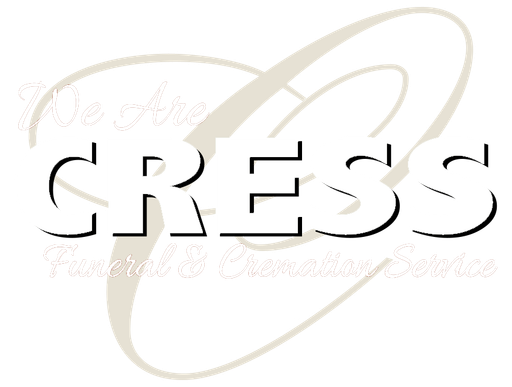

Dr. Robert De Mars, Ph.D.
Madison
Dr. Robert De Mars, Ph.D.
Shortly before Thanksgiving of 2023, Robert "Bob" DeMars of Madison, Wisconsin passed away peacefully at age 95. Bob was born in 1928 in New York City to Rhoda and Joseph DeMars. Rhoda was a Jewish pogrom refugee from Romania and Joseph was a truck driver from Maine. Bob’s family required welfare during much of the Great Depression of the 1930s. He was often fed with the aid of food vouchers and sometimes used a piece of cardboard to cover holes in his shoes. Despite this, New York City was a great city in which to grow up for people who were financially limited, particularly from an educational standpoint. The K-8 school that he attended had excellent teachers and an innovative instructional program. He passed a tough entrance exam to gain admission to the Bronx High School of Science. This outstanding high school provided Bob with a superb education that prepared him to advance in life. As an adult, Bob remained grateful to the city and state of New York for the large investments they made in public schools.
Bob attended the tuition-free College of The City of New York as a Biology major. Some of the instructors in the Biology Department were research-oriented and helped Bob undertake research on Drosophila (fruit-fly) genetics. When he graduated in 1949, Bob was awarded the Ward Medal in Biology and the Stratford Prize in Comparative Anatomy. He then attended Graduate School at Indiana University with the intention of continuing research on Drosophila genetics. He soon switched to studying the genetics and development of bacteriophages (viruses that multiply within bacteria) with future Nobel Prize winner Salvador Luria. Luria’s lab moved to the University of Illinois (Urbana), where Bob received his Ph. D. in Bacteriology in 1953. After a year as a Postdoctoral Fellow at the California Institute of Technology, he was appointed as an instructor in Microbiology at The Washington University School of Medicine (St. Louis) in 1955. After about 18 months, he moved to Bethesda, Maryland to work as a Senior Scientist at the National Institutes of Health (NIH).
At NIH, he pioneered a new kind of genetics research that utilized human cells cultured by the millions in the laboratory. These cultures were of two different kinds: Normal fibroblasts grown out from tiny skin biopsies, and lymphoblastoid cell lines (“LCL”) that were created by infecting blood lymphocytes with the Epstein-Barr virus. He and co-workers studied unique mutations in one gene on the X-chromosome and one gene on chromosome #16. They learned how to induce mutations by treating cells with a chemical mutagen or by irradiating them with gamma rays that delete segments of DNA from chromosomes. These studies of mutagenesis were employed in the discovery of new genes in the human major histocompatibility complex (“MHC”) on chromosome #6. The MHC is a cluster of genes that encode proteins that execute immune responses to transplanted tissues in particular (hence its name), and to antigenic substances, in general. Overlapping deletions induced by gamma rays allowed genes in the MHC to be aligned on the chromosome in a way that had not previously been feasible. Lastly, a succession of irradiations and mutant selections was used to create a remarkable mutant that completely lacked an MHC. Transfer of individual cloned MHC genes into this mutant resulted in the creation of a collection of LCLs (“transferents”), each of which expressed just one or another MHC gene. MHC mutants were invaluable tools in subsequent studies.
In 1959, Bob became an instructor in the newly created Department of Medical Genetics at the University of Wisconsin (Madison), where he remained until his retirement in 2014. Bob liked to teach and taught “General Genetics” to undergraduates, “Medical Genetics” to medical students, and created new courses (e.g., “Somatic Cell and Molecular Genetics” and “Genetics of Cancer”). Throughout, he cooperated with clinicians in linking his basic laboratory research to solving medical genetic problems. For example, he contributed to discoveries of abnormal chromosome constitutions that caused human congenital abnormality syndromes. By remark-able coincidence, mutations in one of the genes (“hpt”) he had chosen for detailed studies of spontaneous and induced mutations in cultured cells turned out to be the cause of the deva-stating, untreatable Lesch-Nyhan Syndrome (L-N). The only way to constrain the incidence of L-N births was to identify asymptomatic females who had a copy of the mutant gene on one of their X-chromosomes. He developed a laboratory method for identifying such females and traveled with a physician colleague all over Wisconsin to obtain skin biopsies from them. That reduced the incidence of new L-N births to about one per 250,000.
The diversity of his teaching and research interests prompted his joint appointments in the departments of Genetics (College of Agriculture and Life Sciences), Medical Genetics, and Human Oncology (School of Medicine). Bob deeply appreciated the recognition of his research and teaching efforts when his colleagues awarded him a “Hilldale Award For Excellence in Teaching and Research in the Biological Sciences” and named him the “Tracy M. Sonneborn Professor of Medical Genetics, Genetics and Human Oncology.”
After he administratively retired at age 65, a peculiar set of circumstances created by another faculty member involved Bob in research about human immune responses to infections with Chlamydia trachomatis (“Ct”), which is the most common cause of sexually transmitted bacterial infections and of preventable blindness. He and his associates performed laboratory experiments showing that when cultured cells were infected with two different Ct strains, some of the progeny had DNA derived from both infecting strains, showing that DNA could be transferred from one Ct organism to another. His work demonstrated for the first time that DNA could be transferred from one Ct organism to another, and this DNA transfer increased the viability of Ct in the body. This first publication about Ct genetics was publicly acknowledged to be a landmark paper in the field. Bob was 80 years old at the time, and he decided that would be a good time to retire!
Bob was fortunate in his personal life. He met his future wife, Ann, at the National Institutes of Health in Bethesda, Maryland in 1956; they married in 1958. Together, they raised a family in the Crestwood neighborhood on the west side of Madison -- a place that they cherished for the rest of their lives. Throughout their marriage, Ann was Bob's faithful birding buddy. They shared many enjoyable experiences such as fall trips along the Mississippi River, with hawks migrating above the high bluffs and flocks of Tundra Swans resting in pools. On one of their more memorable adventures, they traveled north along the Maine coast and took a ferry to Newfoundland. There, they enjoyed with awe the sight and sounds of thousands of sea birds milling about above their cliff-side colonies. Bob and Ann also planned a number of bird-watching excursions with Crestwood neighbors to locations near and far. The most memorable of those excursions was when eleven neighbors drove to Kearney, Nebraska. There, they viewed thousands of Sandhill Cranes resting on the Platte River before continuing their northward migration. Flocks of cranes were flying about wherever one looked, bugling loudly. It was the experience of a lifetime! Closer to home, Ann assembled a collection of bird feeders and birdbaths that made sitting and watching out of the back windows of their home as enjoyable as making a trip to see birds!
Cranes mate for life and so did Bob and Ann. She died one week after their 60th anniversary in 2018. Cranes dance while courting. Ann and Bob loved to dance and they share a gravestone adorned with a pair of dancing cranes at Forest Hill cemetery! During the years after his wife died, Bob was able to continue living at home because of the attentive visits and help from his children. This included taking excursions in the Crestwood neighborhood, where he could interact with the people of this wonderful community that had sustained him and his family for over 60 years. The many good things in his life as it neared its end prompted Bob to regard himself as a very fortunate person.
Bob was preceded in death by his parents, brother, and sister. He is survived by children Matthew (Elsy), Adam (Jill), Amy (Rich), and Mark, by grandchildren Christina, Logan and Heather, and great-grandchild Josef. His children are especially grateful to the medical staff at UW Hospital for helping ease Bob to his final day with exceptional skill and compassion.
A celebration of Bob's life will be planned for spring of 2024. Suggested memorial donations may be made to Madison Public Schools Foundation, Robert and Ann DeMars Lecture in Genetics Fund, or Badgerland Bird Alliance.
Guestbook
Visits: 674
This site is protected by reCAPTCHA and the
Google Privacy Policy and Terms of Service apply.
Service map data © OpenStreetMap contributors





